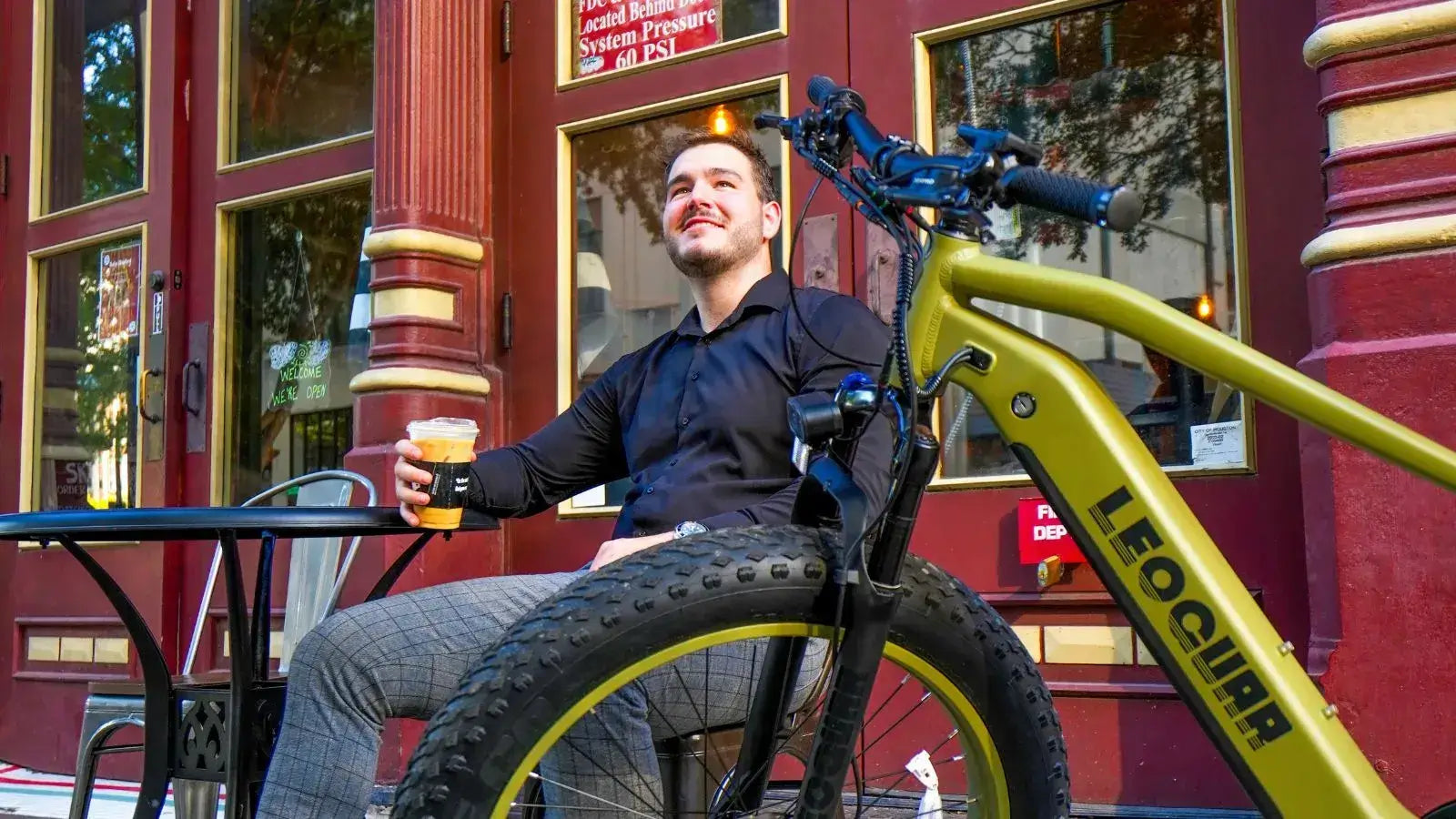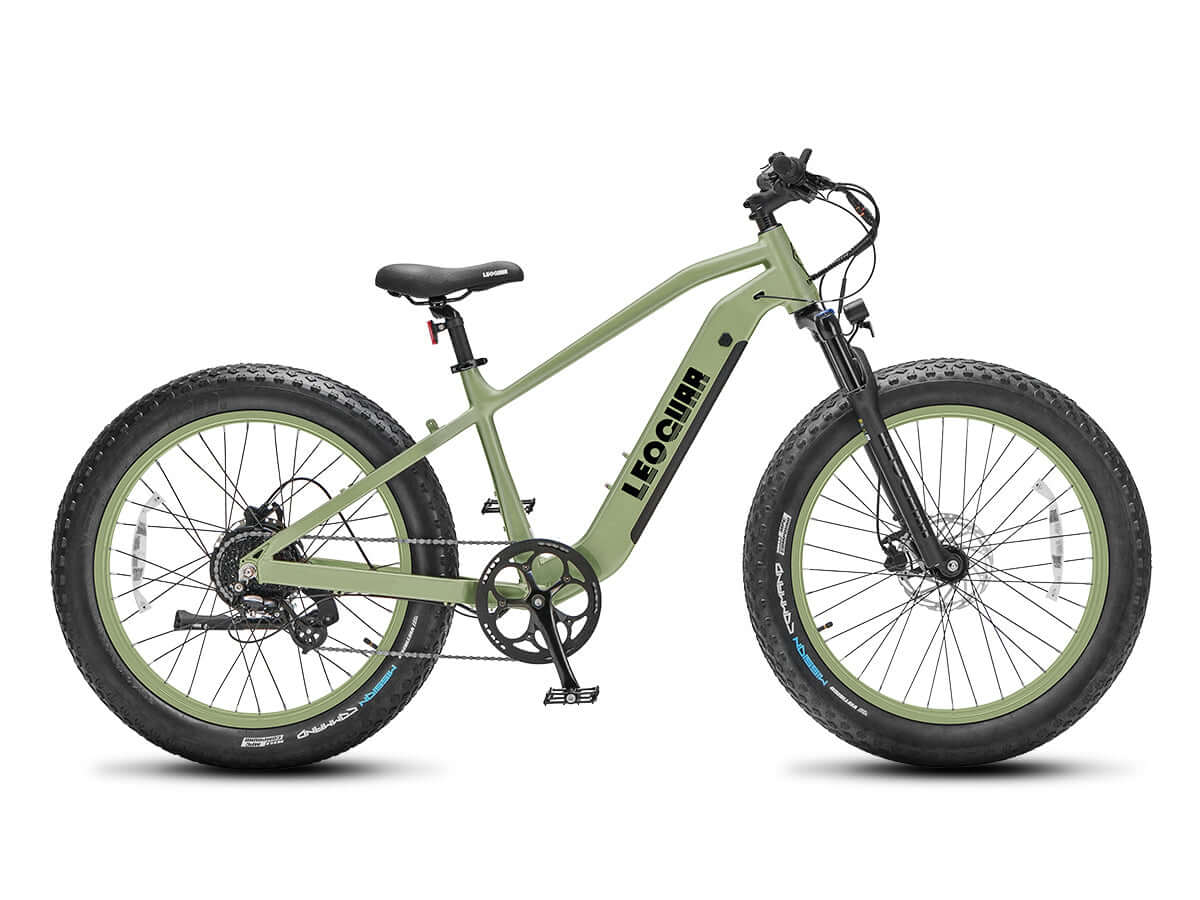
Center vs Rear: The Physics Behind Electric Bike Battery Placement
The Quick Answer on Placement
Both electric bike battery placement options work well. The location of your battery has the biggest impact on how your bike handles and feels. A center-mounted battery gives you the best performance because it sits on or inside the downtube. This creates a lower center of gravity that makes your bike more stable and responsive.
Rear-rack batteries are often found on cheaper bikes or step-through models. They create a higher center of gravity and put more weight toward the back of the bike. This can make your bike feel less stable when you ride fast or take corners, but these batteries are easier to remove and work better with certain frame designs.
The choice between them comes down to ride quality versus other factors like cost and frame style. The rest of this article explains the physics behind why this is true.
The Physics of Your Ride
You need to understand two simple physics ideas to see why a few inches can change how your bike rides. Don't worry - there's no test at the end.
Center of Gravity (CoG) is like the balance point of your entire bike. A lower center of gravity makes things more stable, just like carrying a heavy box at your waist is easier than balancing it on your head.
Moment of Inertia measures how hard it is to rotate an object. It's not just about weight, but where that weight sits. Think of a figure skater spinning - when their arms are out, they spin slowly, but when they pull their arms in, they spin much faster.
Your battery is often the heaviest single part on your e-bike. Where you put it changes both the center of gravity and the moment of inertia, which affects everything from turning to climbing, as shown in The physics of a bicycle in motion.

The Performance Choice: Center-Mounted
A center-mounted battery is the best choice when you want performance, stability, and natural bike feel. This design puts the battery along the downtube and works with physics to create better handling.
Low Center of Gravity
The battery weighs 5-8 pounds, so putting it in the lowest, most central part of the frame lowers your bike's center of gravity. This makes your bike much more stable and predictable when you ride fast or lean into turns.
The bike feels solid underneath you instead of like it wants to tip over. This is why many modern e-bikes feel so confidence-inspiring, which relates directly to the effect of a lower center of gravity on how stable vehicles are.
Nimble and Responsive
Putting the battery in the center reduces the moment of inertia, like a figure skater with their arms pulled in. The bike wants to turn more easily and responds faster to your steering.
It feels quick and agile instead of like a heavy truck. When you ride through tight, winding paths, the difference is huge - you think about turning and the bike just does it.
Braking and Climbing
Balanced weight helps you stay in control. When you brake hard, the central weight keeps both wheels on the ground for better traction and prevents the rear wheel from lifting up.
When you climb steep hills, it keeps the front wheel down so you can steer properly. This gives you control exactly when you need it most.
The Convenience Choice: Rear Rack
You'll see rear rack batteries on many cruiser-style, folding, and step-through e-bikes. They don't handle as well, but they offer real advantages in convenience and frame design.
High and Rearward CoG
Mounting the battery behind the seat post does the opposite of downtube placement - it raises the center of gravity and shifts it backward. This makes the bike feel top-heavy and less stable.
Many riders describe this as the "tail wagging the dog" where you can feel the weight behind you affecting the bike's direction. This is especially noticeable when you're going slow or starting to turn, which is a classic example of how weight distribution affects handling.
The "Pendulum Effect"
This rear weight also increases the moment of inertia because the mass is far from the bike's center pivot point. The bike feels slower and more reluctant to turn, and once you're in a turn, that rear weight wants to keep going straight.
This creates a swinging or pendulum feeling that can be uncomfortable for riders who want good performance.
Traction and Frame Stress
Having extra weight over the rear wheel can improve traction on flat, loose surfaces. However, it can also make the rear wheel bounce more over bumps.
The rear rack and mounting points need to be strong enough to handle not just the battery's weight but also the forces from bumps and vibration over thousands of miles.
Head-to-Head: A Practical Comparison
Here's how the two main electric bike battery placement options compare in real-world use. Remember, the battery weighs 5-8 pounds, so its location really matters.
| Feature | Center-Mounted Battery (Downtube) | Rear Rack Battery |
|---|---|---|
| Handling & Agility | Nimble, responsive, and intuitive. Easy to lean into turns. | Slower to initiate turns, can feel cumbersome or sluggish. |
| High-Speed Stability | Excellent. Feels planted, stable, and confidence-inspiring. | Fair to good. Can feel top-heavy and less stable in corners. |
| Balance & Feel | Integrated and natural. The bike feels like a single, cohesive unit. | Rear-heavy. Can produce a "pendulum effect" or feel like the "tail wags the dog". |
| Aesthetics | Often sleekly integrated into the frame for a clean, modern look. | More utilitarian. Can look like an add-on component. |
| Ease of Removal | Good. Usually involves a key and a latch; integrated batteries may need a specific angle. | Excellent. Typically very simple to slide on and off the rack. |
| Best For | Mountain biking, performance road riding, technical commuting, and any rider prioritizing handling. | Casual cruising, step-through frames, utility bikes, and riders prioritizing easy removal. |
From Theory to Reality: Battery Removal
Understanding electric bike battery placement isn't just about physics - it's also about daily use. The location affects how you'll remove the battery for charging, security, or transport.
Removing a Center-Mounted Battery
These batteries sit on or inside the downtube and usually come off the same way.
- Power Down: Always turn off your bike's power completely before touching the battery.
- Unlock: Put the key into the lock, which is usually on the side of the downtube opposite the battery. Turn the key to unlock and listen for a click as the latch releases.
- Release and Remove: The battery is hinged and will tilt outward from the top or side. Gently pivot it away from the frame until it clears the mount, then lift it off.
Pro Tip: Fully integrated batteries can be tight fits, so you may need to tilt them to a specific angle to avoid scratching the frame.
Removing a Rear Rack Battery
This is usually the easiest process because it's designed for maximum convenience.
- Power Down: Make sure the bike is turned off first.
- Unlock: The lock is usually on the rack itself, near the front or side of the battery. Insert and turn the key.
- Slide and Support: The battery will slide backward out of the rack. Put one hand on the back to pull and be ready to support its full weight with your other hand.
They can be heavier than they look, so be prepared.
Why Remove The Battery?
Removing your battery is a normal part of owning an e-bike. You'll do it for charging (bringing it indoors is more convenient and protects it from extreme temperatures), security (a bike without a battery is much less attractive to thieves), transportation (removing the 5-8 pound battery makes the bike much easier to lift onto a car rack), and cleaning (taking the battery off lets you clean your bike frame better without worrying about the electronic contacts).

Beyond Placement: Other Factors
Electric bike battery placement is important, but it works together with other design choices.
Integrated vs. External: A center-mounted battery can sit on the downtube or hide inside it. Integrated batteries look cleaner and get better protection but can be harder to service and sometimes have less capacity for their size.
Battery Capacity: Measured in Watt-hours (Wh), capacity determines how far you can ride. A larger capacity means longer range but also a heavier, larger battery, making placement even more important for handling.
Frame Design: The type of frame often decides where the battery goes. Low-step or step-through frames don't have a traditional downtube, so a rear rack or seat tube-mounted battery becomes the best option.
Making the Right Choice
The best electric bike battery placement depends on what you need.
If you're a performance-oriented rider who loves taking corners, tackling technical trails, or just wants the most stable and responsive ride possible, choose a center-mounted battery. The better balance and handling are clear winners.
If you mainly need accessibility, convenience, and casual riding, a rear-rack battery can work perfectly well and often costs less. It works great on step-through frames and for riders who want easy battery removal.
The best advice is to test ride bikes with both setups if you can. You can feel the difference immediately, and that will tell you more than any specification sheet ever could.









































Leave a comment